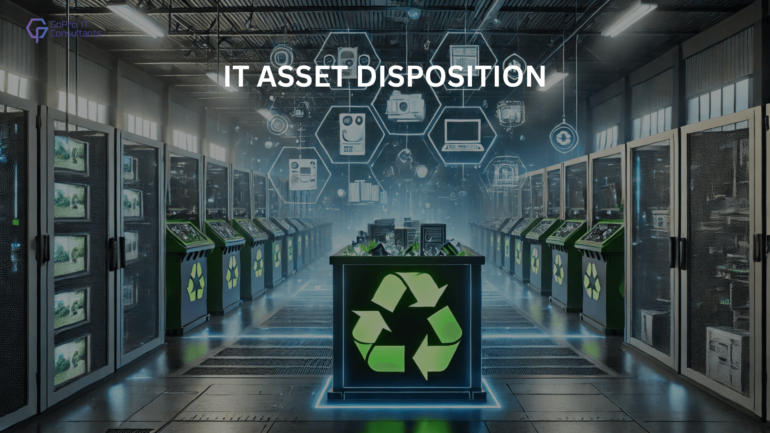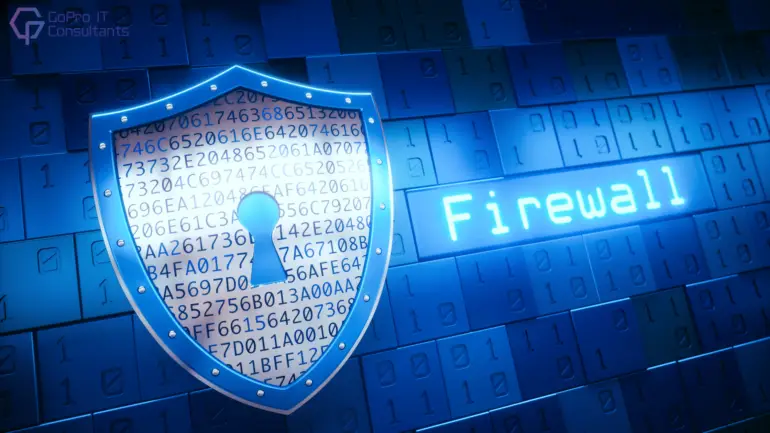
Let’s be honest, technology is changing more quickly than ever before. Your business is undergoing a major upgrade of its infrastructure however, what will happen to the old IT equipment? Laptops, computers, servers and even phones are full of valuable information and simply throwing them away is not an alternative. It’s not enough to ensure that your data is securely erased however, you have to comply with the laws and safeguard the environment. This is why you need to consider IT Asset Disposition (ITAD) which is an essential process for businesses who want to manage how they dispose of technology correctly. In this guide, we’ll walk you through why ITAD is so important, how to stay compliant with relevant laws, and the benefits of partnering with professional ITAD services like GoProIT to ensure everything is done safely and sustainably. What is IT Asset Disposition (ITAD)? In simple words, IT Asset Disposition (ITAD) is the appropriate elimination of IT equipment after the point of expiration for its usage. It’s more than simply disposing of outdated devices such as computers or phones. The aim is to safeguard sensitive information and afterwards recycle it securely and follow the law which regulates how technology should be disposed of. What’s the point? Every year, companies upgrade their infrastructure for IT. This means that older devices are heading to the dump. So if your company doesn’t have a properly planned ITAD strategy, your company could be at risk of being penalized, hacked data or even damage to the natural environment. ITAD can ensure that everything is running securely, and also maximize the utilization of your old equipment. Why is ITAD Important for Your Business? ITAD isn’t just something you can cross off on your list of tasks. It’s an integral element of your business’s overall policy regarding security, lawful compliance and sustainability. Here’s why: 1. Data Security Have you realized that older devices could still hold sensitive information, even though the devices have been “retired”? From financial information to customer data information, even a minor error could expose your company to significant risks. In reality, according to IBM, the average cost of data breaches during the year 2023 stood at $4.45 million. A proper ITAD assures that your data is destroyed, safeguarding your business from costly security breaches. 2. Environmental Responsibility The issue of E-waste is growing. In 2019, the world generated 53.6 million tons of E-Waste which is up 21 per cent in just five years(According to Global UN E-Waste Monitor). This figure is expected to increase in the coming years. If you choose the environment-friendly ITAD process, it will not only protect your business from harm, but it can also benefit the environment. Recycling and reusing parts of obsolete equipment reduces emissions for your company and contributes to a circular economic system. 3. Legal Compliance The inability to properly dispose of IT equipment isn’t just harmful to companies, it’s criminal. Regulations such as the WEEE Directive (Waste Electrical and Electronic Equipment) and GDPR, in conjunction with GDPR, and the Data Protection Act 2018 have specific guidelines for the disposal of IT assets. If your firm doesn’t comply in compliance with these laws they could result in serious penalties or even greater sanctions. ITAD services will ensure you’re following exactly what you’re required to follow. 4. Cost Recovery Have you got a working piece of equipment that’s not in use anymore? Don’t let it sit in the dust. By utilizing the correct ITAD solutions, you will be able to get back some of the costs through reselling or refurbishing assets. This could offset the cost of upgrading your system and make ITAD an investment that is both profitable and beneficial financially. ITAD Laws and Compliance In the case of getting rid of old technology, the legal requirements are more crucial than ever. There are strict rules that companies must adhere to ensure that the environment and sensitive information are secure. 1. WEEE Directive It is the WEEE Directive is a crucial piece of legislation which regulates the way electronic waste is handled within the UK and EU. The directive requires companies to make electronic garbage disposal that is environmentally sustainable and guarantees recycling of the equipment, and hazardous materials are properly handled. The business should also employ certified waste hauliers and keep careful records of their disposal. If a company fails to comply the company could face an extreme risk. 2. Data Protection Laws (GDPR & DPA 2018) The laws ensure that personal information is protected throughout its life. When you get rid of equipment or IT which stores personal data It is required to be destroyed permanently to protect against security breaches of data. Infractions to GDPR may result in penalties of as high as EUR20 million which is 4 per cent of your total turnover. It is important to guarantee that every device is securely deleted and destroyed. 3. Environmental Regulations In addition to The WEEE Directive, there are many environmental regulations aimed at reducing the environmental impact associated with electronic garbage. For instance, the Restriction of Hazardous Substances (RoHS) directive bans the use of hazardous substances within electronic devices. The regulations are to be adhered to so that your business isn’t only legally compliant but also helps to create a more environmentally sustainable and long-term future. The ITAD Process: Step-by-Step Once you’ve understood the significance of ITAD along with the legal system, let’s take a look at the common ITAD procedure: Step 1: Inventory Assessment The first step in the ITAD process is to take stock of all your outdated IT assets. This involves creating a detailed inventory of every device that needs to be disposed of, including: Why This Matters:A thorough inventory ensures that no device is overlooked, reducing the risk of data breaches or non-compliance. It also helps in planning the next steps, such as data destruction and recycling. Tip: Use asset tracking software to streamline this process. It can save time and reduce errors, especially for businesses with



